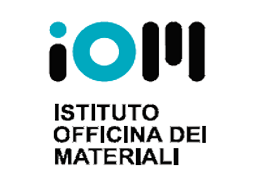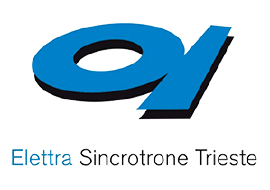Observation of Magnetoelectric Coupling at the Ni/Hf0.5Zr0.5O2 Interface
The recently emerged class of polycrystalline doped HfO2-based ferroelectric thin films, which are compatible with the modern Si technology, is a promising ferroelectric component in composite multiferroic heterostructures and it is therefore crucial to explore the ME effect at the ferroelectric/ferromagnetic interface in the heterostructures comprising doped HfO2. In this respect, a strong charge-mediated magnetoelectric coupling at the interface between classical ferromagnetic metal - Ni and ferroelectric HfO2has been recently predicted by theoretical modelling.
In these studies, the international team used several techniques, as illustrated in Fig. 1. An important part of information was obtained by the magnetic circular dichroism technique (XAS/XMCD) at the Elettra beamline APE-HE, probing the local magnetic properties of nanometer-thick Ni marker layer in contact with alloyed ferroelectric Hf0.5Zr0.5O2 in functional Au/Co/Ni/Hf0.5Zr0.5O2/W capacitors. The XMCD results were complemented with magneto-optical Kerr effect (MOKE) and electrical measurements under x-ray beam, exploring the magnetic and ferroelectric properties of Co/Ni and Hf0.5Zr0.5O2 layers respectively in the prototype memory (Figure 1).

Switching in situ the ferroelectric polarization in Hf0.5Zr0.5O2 layer has provided clear evidence for the effect of ferroelectric charges on the magnetic response of a nanometer-thick Ni marker layer (Figure 2 a). These observations were further corroborated by the measurements with alternative techniques, i.e. hard x-ray photoemission spectroscopy combined with the magnetic circular dichroism in angular distribution (HAXPES/MCDAD) at PETRA III synchrotron, DESY (Figure 2,b). The observed magnetoelectric effect as well as the relative electronic band lineup at the Hf0.5Zr0.5O2 interface are interpreted with the help of theoretical modeling. It elucidates the critical role of an ultrathin NiO interlayer, which controls the sign of the magnetoelectric effect as well as provides a realistic band offset at the Hf0.5Zr0.5O2 interface, in agreement with the experiment. These findings prompt the possibility for using ferroelectric HfO2-based composite multiferroics in the design of multifunctional devices compatible with the modern semiconductor technology.





